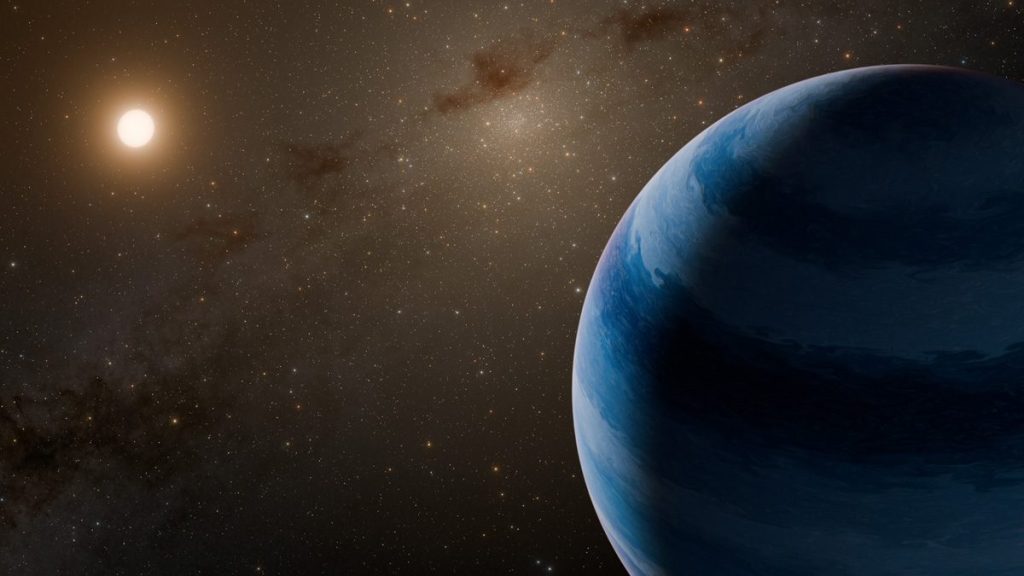Scientists spot a speedy star dragging a planet through space at 1.2 million miles per hour – Sky at Night Magazine

Iain ToddAstronomers may have discovered a star dragging a planet through the cosmos at speeds of at least 1.2 million miles per hour, or 540 km per second.If confirmed, this single star and planet system are travelling almost twice as fast as our Solar System moves through the galaxy.What’s more, the speedy pair was only discovered due to a chance alignment.A team of scientists were trawling througharchive data captured in 2011 by a project called MOA (Microlensing Observations in Astrophysics).This was carried out using the University of Canterbury Mount John Observatory in New Zealand to search for light signals that could indicate potential exoplanets, which are planets orbiting stars beyond our Solar System.The project used a technique called microlensing, which is similar to gravitational lensing and operates on the basis that an object’s mass warps spacetime.Microlensing can be used to find exoplanets because, when an object – like a planet – drifts near a star, light from that star is bent as it travels through warped spacetime around the closer object.This warping can act like a ‘lens’, brightening and magnifying the star’s light.Microlensing signals detected by the MOA project revealed a pair of celestial bodies with our Galaxy, and the team were able to calculate their masses relative to one another.The more massive object is 2,300 times heavier than the other.However, determining the actual mass of both objects is trickier, because their apparent masses – as defined by the lensing effect – depends how far away from Earth they are.”Determining the mass ratio is easy,” says David Bennett, a senior research scientist at the University of Maryland, College Park and NASA Goddard, who co-authored the paper and led the original study in 2011.”It’s much more difficult to calculate their actual masses.”The 2011 team calculated that the objects were one of two things.Either the pair was a star 20% as massive as our Sun and a planet 29 times heavier than Earth.Or the pair was a closer ‘rogue’ planet (i.e. without a host star) four times the mass of Jupiter with a moon smaller than Earth.They trawled through data from the Keck Observatory in Hawaii and the European Space Agency’s Gaia satellite to get a second look at the objects.They knew that, if it was a planet and moon, the pair would be too difficult to see, whereas a star would be identifiable.They found a candidate 24,000 lightyears away in the central bulge of the Milky Way galaxy, which is a region densely packed with stars.By comparing the location of the star in the 2011 data with its location in the 2021 data, the team were able to work out its speed: about 1.2 million miles per hour.However, it’s unclear whether the star is moving away from us or towards us, or whether the astronomers are seeing its direct path across the sky.If it is moving away from us or towards us, it must be moving even faster than calculated.It could even be moving faster than our galaxy’s escape velocity (the speed at which an object can break free of another body’s gravitational pull).If so, this star and planet system could one day leave our galaxy and head out into interstellar space.”To be certain the newly identified star is part of the system that caused the 2011 signal, we’d like to look again in another year and see if it moves the right amount and in the right direction, to confirm it came from the point where we detected the signal,” Bennett says.“We think this is a so-called super-Neptune world orbiting a low-mass star at a distance that would lie between the orbits of Venus and Earth if it were in our Solar System,” says Sean Terry, a postdoctoral researcher at the University of Maryland, College Park and NASA’s Goddard Space Flight Center in Greenbelt, Maryland.”If so, it will be the first planet ever found orbiting a hypervelocity star.””If high-resolution observations show that the star just stays in the same position, then we can tell for sure that it is not part of the system that caused the signal,” says Aparna Bhattacharya, a research scientist at the University of Maryland, College Park and NASA Goddard who co-authored the paper.”That would mean the rogue planet and exomoon model is favoured.”A paper describing the results, led by Terry, was published in The Astronomical Journal on 10 February 2025. Read it at iopscience.iop.org/article/10.3847/1538-3881/ad9b0f/meta.Iain ToddScience journalist
Source: https://www.skyatnightmagazine.com/news/speedy-star-dragging-planet-1-2-million-miles-per-hour






